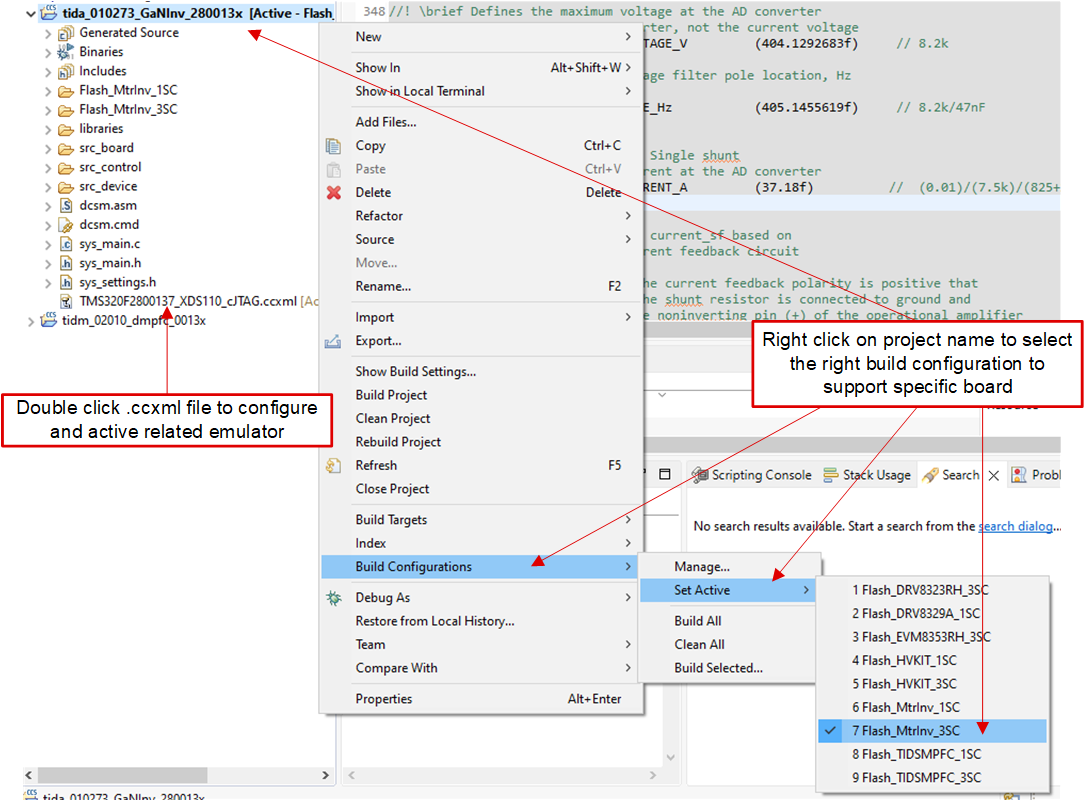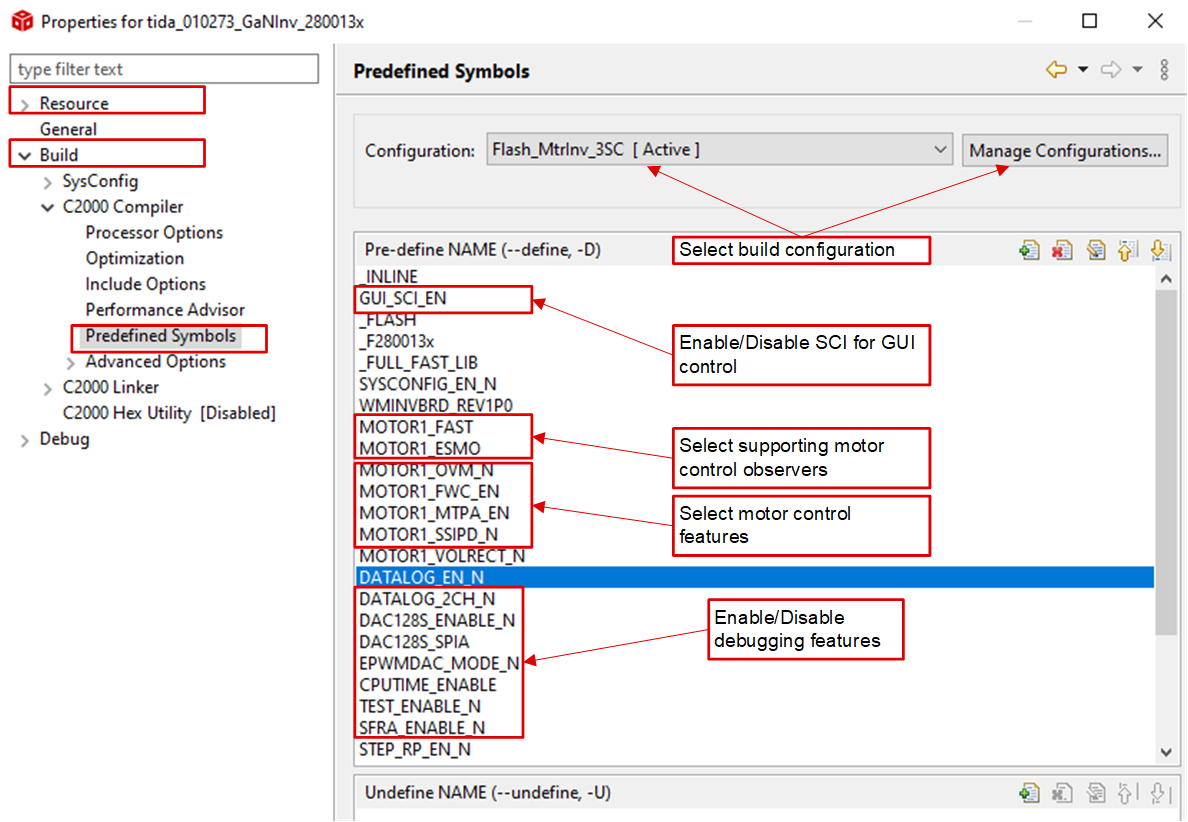TIDUF77 June 2024 MSPM0G1507
- 1
- Description
- Resources
- Features
- Applications
- 6
- 1System Description
-
2System Overview
- 2.1 Block Diagram
- 2.2 Design Considerations
- 2.3 Highlighted Products
- 2.4
System Design Theory
- 2.4.1
Hardware Design
- 2.4.1.1 Modular Design
- 2.4.1.2 Auxiliary Flyback Power Supply
- 2.4.1.3 DC Link Voltage Sensing
- 2.4.1.4 Inrush Current Protection
- 2.4.1.5 Motor Phase Voltage Sensing
- 2.4.1.6 Motor Phase Current Sensing
- 2.4.1.7 Over Current Protection of DRV7308
- 2.4.1.8 Internal Overcurrent Protection for TMS320F2800F137
- 2.4.2 Three-Phase PMSM Drive
- 2.4.1
Hardware Design
-
3Hardware, Software, Testing Requirements, and Test Results
- 3.1 Getting Started Hardware
- 3.2 Getting Started GUI
- 3.3
Getting Started C2000 Firmware
- 3.3.1 Download and Install Software Required for Board Test
- 3.3.2 Opening Project Inside CCS
- 3.3.3 Project Structure
- 3.3.4 Test Procedure
- 3.4
Test Results
- 3.4.1 Fast and clean Rising/Falling Edge
- 3.4.2 Inrush Current Protection
- 3.4.3 Thermal performance under 300VDC
- 3.4.4 Thermal performance under 220VAC
- 3.4.5 Overcurrent Protection by Internal CMPSS
- 3.4.6 IPM Efficiency with External Bias Supply under 300VDC
- 3.4.7 Board Efficiency with Onboard Bias Supply under 300VDC
- 3.4.8 Board Efficiency with External Bias Supply under 220VAC
- 3.4.9 Board Efficiency with Onboard Bias Supply under 220VAC
- 3.4.10 iTHD Test of Motor Phase Current
- 3.4.11 Standby Power Test
- 3.5 Migrate Firmware to a New Hardware Board
- 3.6 Getting Started MSPM0 Firmware
- 4Design and Documentation Support
- 5About the Author
3.3.2 Opening Project Inside CCS
<install_location>\solutions\tida_010273_GaNInv\f280013x\ccs\motor_controlImport the project within CCS and select the right build configurations by right-clicking on project name as shown in Figure 3-18. Select the right build configuration for the HVAC reference design. The Flash_MtrInv_3SC build configuration supports the three-shunt current sensing method, Flash_MtrInv_1SC supports the single-shunt current sensing method.
Configure the project
to select the supporting functions in the project by clicking Project →
Import CCS Projects, and browse to
<install_location>\solutions\
for F280013x based reference design, and then right-click on the imported project
name, click Properties command to set the pre-define symbols for the project
as shown in Figure 3-19.tida_010273_GaNInv\f280013x\ccs\motor_control
 Figure 3-18 Select the Correct Build
Configuration
Figure 3-18 Select the Correct Build
Configuration Figure 3-19 Select the Correct Predefined
Symbols in Project Properties
Figure 3-19 Select the Correct Predefined
Symbols in Project Properties